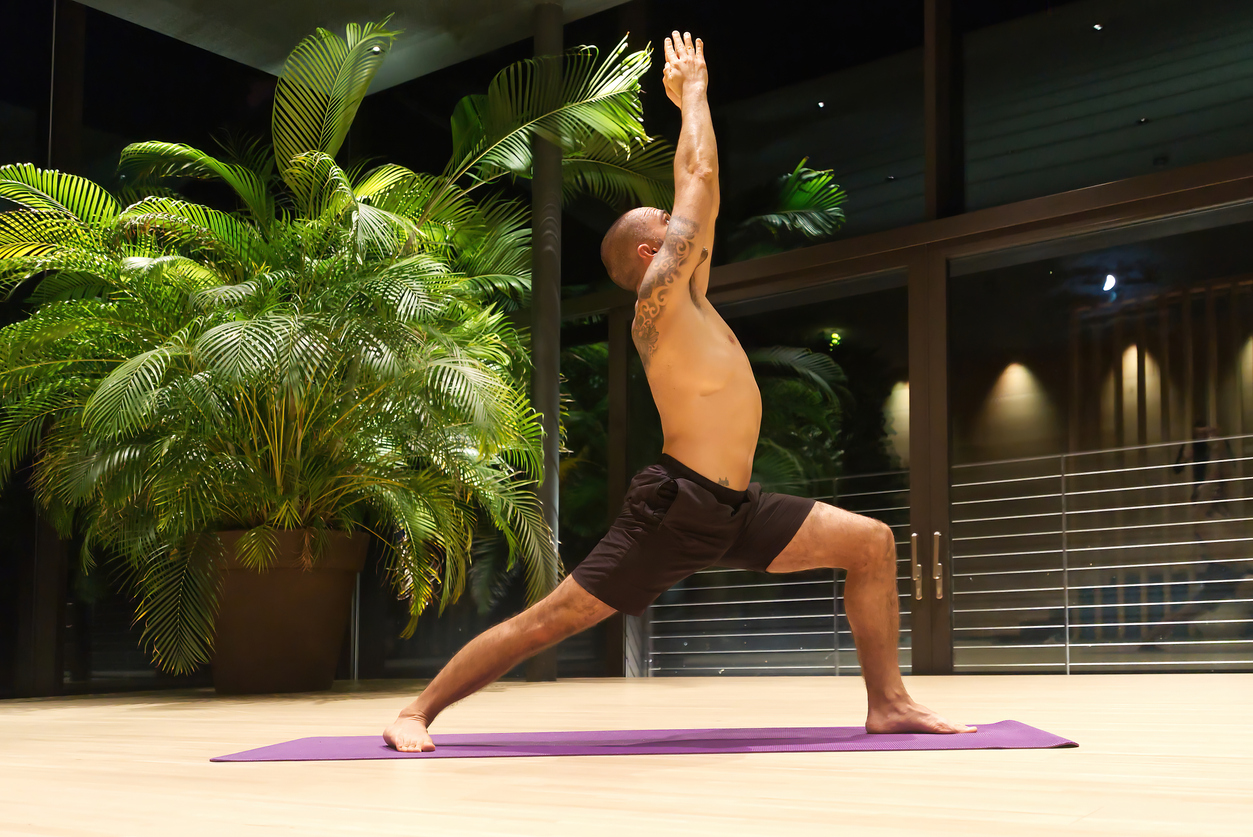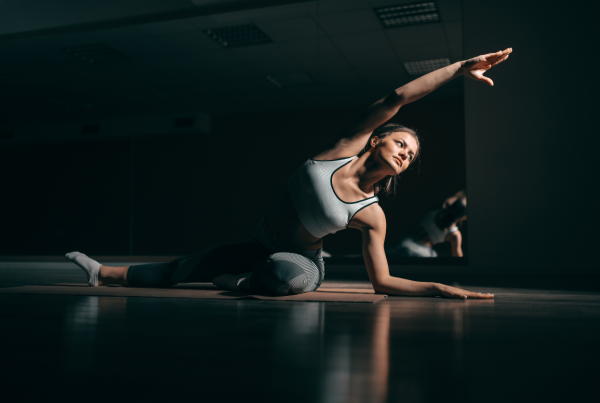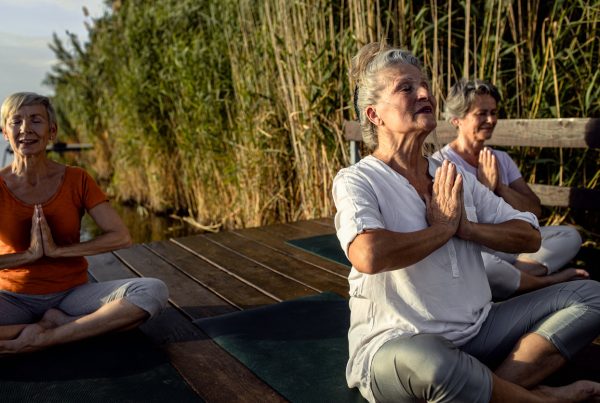Jayne Nicholls looks at the role men have played in the evolution of yoga and where man stands today in the vast landscape of modern yogic practice.
Let’s consider what men have brought to yoga in its longevity and what yoga can bring to men right here and now. How can we shape our dialogue with men within yoga to help them self-actualise?
The father of modern yoga, Maharishi Patanjali, presents as male; although we have no real confirmation of this, I will refer to Patanjali as “he” in respect of yoga tradition. His role reveals the patriarchy that existed in yoga for decades. Use of “modern” in relation to Patanjali dates to 500-800BC, where his role was to create order in the world of yoga, which had evolved at this time from a series of methodologies to heal the internal body via breathwork, meditation and introspection into a mass of different areas of expertise. The result was around 200 pearls of wisdom (sutras) condensed into eight limbs of yoga. While this is not a history lesson, the context of masculinity in yoga is so very important in today’s gender binary society and one to consider when we practise our daily yoga rituals, specifically the Sun Salutation, which is a common thread in the practice of yoga from BC to the here and now (we will come back to this).
When yoga became more of a physical practice via our second father of modern yoga, Krisnamacharya (1888-1989), who was teacher, mentor and father to three of the most influential men in yoga – Pattabhi Jois (Ashtanga Yoga), BKS Iyengar (Iyengar Yoga) and TKV Desikachar (Viniyoga) – we can see the dedication that these men invested in the development of yoga.
Today we often glibly refer to yoga as a lifestyle once we have completed our yoga teacher training course, which is measured in a set number of hours and assessed via one class in the pursuit of profit, so it is worth considering the term “lifestyle” as it was for these men in relation to you and me today. This, I hope, will be a revealing and enlightening consideration.
So, while traditional yoga up to now completely endorses the notion of men as “the stronger sex” – the creators, the providers, the brains and the brawn – since the time of the three modern yoga greats mentioned above, the western male role has been through a process of re-evaluation that has transformed their social dominance. Women have claimed equality. While many men have welcomed these changes, some have found it hard. Men are vulnerable right now, suicide statistics in young and older males are frightening and the modern man is paying the price for the old adage that “boys don’t cry”. This is where yoga and men find the most beautiful “safe place”.
We have established that yoga was, in large, made by men for men. However, yoga is a physical articulation of masculine movement that benefits all. As teachers of yoga, we must be mindful that the ultra-modern social media interpretation is female and flexible. This can often discourage men from entering a yoga class in fear of not being flexible enough.
We teach the mobilisation of energy within the body via a unification of breath, mind and movement and this energy is released within the confines of a studio space, providing a balanced, non-dominant union between the sexes. I often chatted with a personal yoga client about the beauty and intimacy of our relationship that would not be as acceptable were we to meet once a week for a drink and a chat. Yoga allows relationships to evolve in a non-verbal, non-tactile environment.
A traditional yoga class is bound by time and place on most studio timetables, making it a reliable space to meet and share. Statistically, men are less likely to talk about their feelings, mental and physical health, worries, concerns or observations, and yoga actively encourages all of these things.
Now back to the Sun Salutation, the perfect entry into yoga for men. It is not complex; it is ultra-achievable, easy to learn and open to advancement.
The simple sagittal plane Sun Salutation (Suryanamaskara) is so much more important to our practice than we give it credit for. Originally designed in praise of the sun, which could be perceived as a gateway into a different existential realm, it later defines as an internal heat that is generated through the amalgamation of dynamic meditation, physical agility and an awareness of energy, both internal and external. I always refer to the Sun Salutation as a gift to everyone who comes to class. Even if you never come again, you can take this gift and work on it for the rest of your life. Today, instead of thinking of it as a series of moves, we will think of it as a series of breakthroughs.
A Sun Salutation dedicated to men
- As we breathe in and raise the arms, we lean back and welcome everything into our mind, body and life.
- As we breathe out into a full fold, we close doors to things that are not doing us justice or helping us in our day-to-day existence.
- As we breathe in, we refuse the body and activate our muscular system to transport us to the next stage.
- The breath out propels us via a step or a jump to the ground.
- The breath in raises us to a supported cobra posture, where we are open and vulnerable and yet so well supported.
- The breath out takes us to the downward facing dog, which opens up a lifetime of fulfilment in one posture.
- The next breath in, which steps in with determination or jumps via a handstand, represents a hurdle that we need to cross.
- The breath out in full fold brings us calm.
- The breath in to stand is a new beginning.
- Breathing out to mountain pose resets us in a different way, every single time we repeat the sequence.
This is what I hope for men and women who practise yoga together – that it brings us a new acceptance of who we are and our roles within society. That we can share our thoughts and feelings without judgement while retaining our spirit and strength of personality and, finally, that we can continue to change and evolve into better people.
I have started to use the serenity prayer of late. It took me a long time to get past the opening word “God”, as something of a non-worshipper. I now think of God as something or anything that I hold a belief in. It is not a God; it is my God and God is a metaphor for the theme of the mantra.
“God, grant me the serenity to accept the things I cannot change, the courage to change the things I can, and the wisdom to know the difference.
Want to learn more with Jayne? Check out her online education on the FitPro Education Platform: Mindfulness & Breathwork – The Essentials
Did you know FitPro provide insurance for yoga professionals online?








